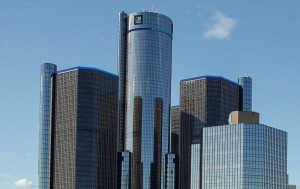
Michigan residents pay more for auto insurance than drivers in any other state, according to a new study.
For the fourth consecutive year, Michigan residents are the kings of paying more than anyone for auto insurance, according to Insure.com, putting out an average of $2,395 year for coverage: 82% higher than the national average.
The national average for car insurance is $1,076 per year.
Conversely, drivers in Maine enjoy the lowest premiums in the country. Their rates are 34% lower than average coming in at $864 each year. This is the third year in a row, and sixth time in the last eight years Maine has been the cheapest state.
Michigan premium is 177% more than Maine’s cheapest average rate for the country. For an example of how rates compare for specific vehicles, insuring a 2017 Toyota Camry LE in Michigan costs, on average, $2,711. In Maine, the average rate for the best-selling sedan is just $945.
(New car sales continue downward spiral in July. For the story, Click Here.)
Michigan’s perch atop the “most expensive” mount isn’t all that surprising, with much of that issue being attributable to one issue.
“Michigan residents can blame their unique no-fault system for their high cost of auto insurance,” said Penny Gusner, Insure.com consumer analyst. “It allows for unlimited medical benefits for injuries sustained in auto accidents and a lot of fraud arises — the result is exorbitant car insurance premiums for car owners.”
Michigan was followed by Louisiana, Connecticut, Rhode Island and Florida as the most expensive states for insurance. Louisiana’s average is 46% higher than the national average rate and it too has a pretty specific reason for its ranking: lawsuits.
The litigious culture of the state has driven the prices up dramatically. When large claims are continually paid out, insurance companies raise all policyholders’ premiums to cover these settlements.
(Click Here to see more about GM completing the Opel sale.)
Maine was followed on the “cheapest” list by Ohio, Idaho, Vermont and North Carolina. According to Gusner, there is a common thread that binds these states together.
“States with cheaper car insurance rates tend to be more rural regions of the nation,” Gusner says. “A higher concentration of motorists in metro areas leads to crashes, claims and thus higher auto insurance rates. Car insurance companies see rural regions with less traffic to be less of risk and, thus, charge less.”
Insure.com commissioned Quadrant Information Services to calculate auto insurance rates from six large carriers (Allstate, Farmers, GEICO, Nationwide, Progressive and State Farm) in 10 ZIP codes per state. Rates were compiled in May 2017.
Rates were averaged rates in each state for the cheapest-to-insure 2017 model-year versions of America’s 20 best-selling vehicles for the first quarter of 2017 and ranked each state by that average.
(Who is in the sales lead for the first half of 2017? Click Here to find out.)
These models represent a little more than 40% of the U.S. new-car market in 2017, the website noted. By highlighting the most popular vehicles, averages are more accurate without high-end sports or luxury cars skewing the data. Rates are for comparative purposes only within the same model year.
(Read our take on the best car insurance companies.)


Much of Michigan is an urban state with high crime rates, so a fair bit of the risk should be assigned to those factors as well.
There are other states more highly urbanized with worse crime than Michigan.
One big issue in MI is the unlimited medical insurance fund, which is apparently not audited. And the managers of that fund are always asking for more money.
I find it hard to believe that a huge number of people require lifetime medical care, but no one will ever know since the government won’t force them to open the books.
Suburbs in Michigan are very safe..the insurance rates must be cheaper as the infrastructure is already developed.